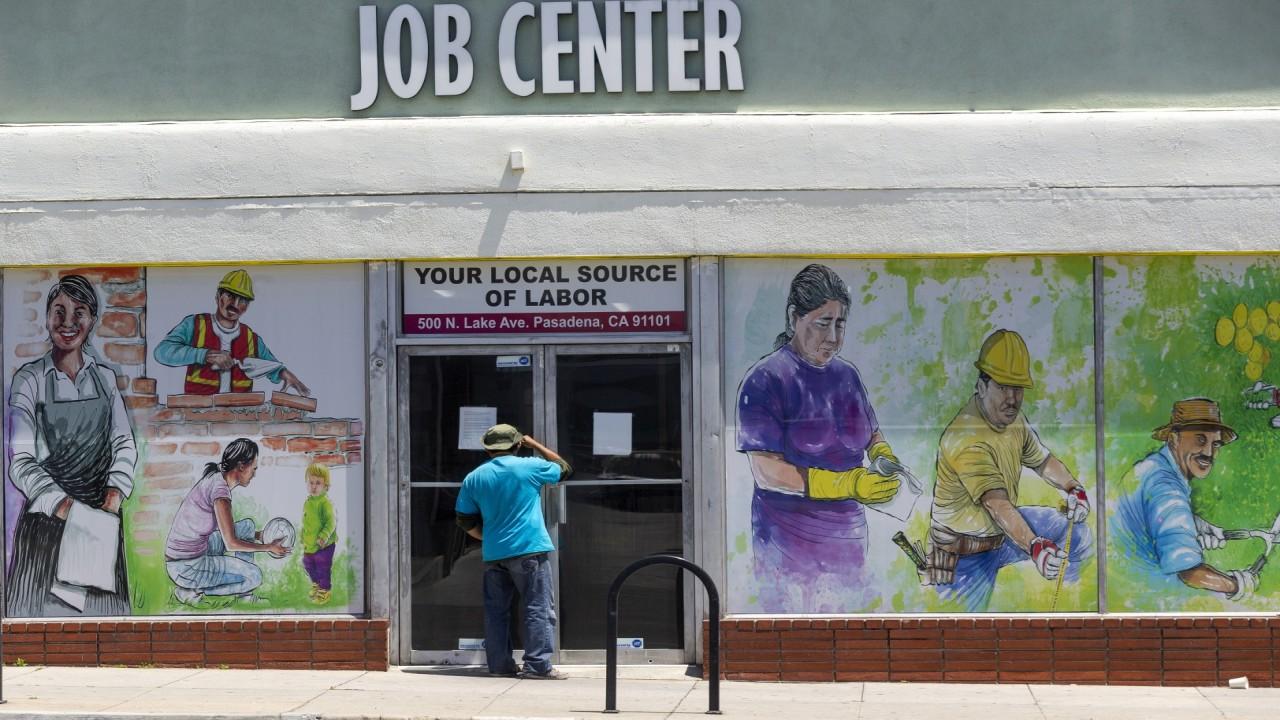State, local governments need $500B in aid to avoid 4M job losses
State, local governments face gaps totaling close to $500B through fiscal 2022
State and local governments need at least $500 billion in additional aid over the next two years to avoid severe economic damage from the coronavirus pandemic, according to a new report released by Moody's Analytics.
If governments do not receive more relief from Congress and the White House, it could shave at much as 3 percentage points from the GDP -- the broadest measure of goods and products produced in the country -- and erase about 4 million jobs, findings from the Thursday report show.
Combined, state and local governments face gaps totaling close to $500 billion through fiscal 2022.
EXTRA $600 IN UNEMPLOYMENT ENDS NEXT MONTH AS MILLIONS OF AMERICANS REMAIN OUT OF WORK
The CARES Act, the $2.2 trillion relief bill passed at the end of March, gave about $500 billion to state and local governments. But the report, led by Moody's economist Dan White, urged lawmakers to set aside more aid in the fourth virus relief package.
"That will provide state and local government policymakers sufficient breathing room to avoid having to make economically disastrous fiscal decisions, and should a second virus outbreak actually occur, federal policymakers will have plenty of time to consider the prospect of additional aid over future fiscal years if necessary," the report said.
The White House has said it expects stimulus talks to begin after the Fourth of July. The Senate is not scheduled to return to Washington until July 20, making it unlikely that lawmakers will pass another round of aid before that date.
FULL ECONOMIC RECOVERY HINGES ON VIRUS CONTROL, POWELL SAYS
It's unclear what specific measures may be included in a fourth relief bill. In May, House Democrats passed the $3 trillion HEROES Act, which would give about $1 trillion to state and local governments. However, the legislation stalled out in the Republican-controlled Senate.
"The scope of aid being requested is certainly unprecedented in size and warrants significant scrutiny," the report said. "For example, the $1 trillion in aid recently approved as part of the house’s HEROES Act would be enough to raise the eyebrows of even the most aggressive advocates of fiscal stimulus. Though the magnitude of such an aid package is certainly up for debate, the timing should not be."
CONGRESS HAS FUNNELED TRILLIONS TO CORONAVIRUS RELIEF. WHERE IS THAT MONEY GOING?
More than 1.5 million government workers have already been laid off as a result of the outbreak of the virus, which has dragged the nation into the worst downturn since the Great Depression. Since the economy shut down in mid-March to mitigate the spread of COIVD-19, close to 47 million Americans have lost their jobs.
Economists are increasingly warning of a second wave of job losses. According to an analysis by Bloomberg Economics, 6 million jobs are potentially on the line, including higher-paid supervisors in sectors where frontline workers were hit first, like restaurants and hotels. It could also have a ripple effect in industries such as professional services, finance and real estate.
New York City Mayor Bill de Blasio, during his daily press briefing on Wednesday, warned the city government might have to lay off or furlough 22,000 municipal workers this fall. The virus has bled about $9 billion in tax revenue from the city, he said, and the government is trying to skim $1 billion from the budget.
“We are running out of options here,” de Blasio said. “That is the blunt truth.”
GET FOX BUSINESS ON THE GO BY CLICKING HERE




















